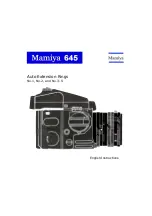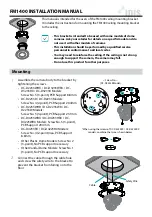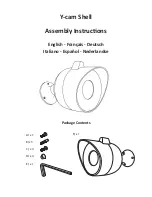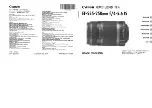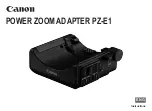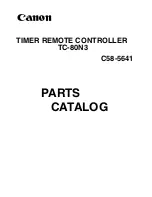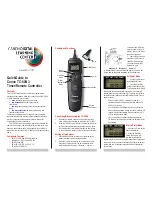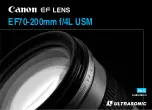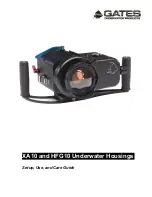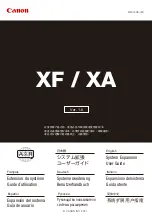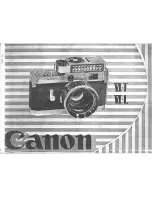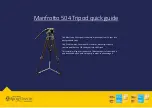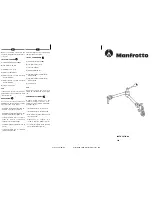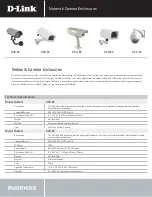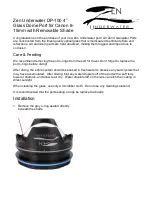
IMPORTANT SAFETY INSTRUCTIONS
FOR LI-ION BATTERIES
-SAVE THESE INSTRUCTIONS-
The battery pack is not fully charged out of the carton. Before using the battery pack and charger, read the safety instructions below.
Then follow charging procedures.
READ ALL INSTRUCTIONS
WARNING:
To reduce the risk of injury, basic safety precautions should always be followed including:
•
Do not incinerate the battery pack even if it is severely damaged or is completely worn out.
The battery pack can explode in a
fire. Toxic fumes and materials are created when battery packs are burned.
•
Do not charge or use battery in explosive atmospheres, such as in the presence of flammable liquids, gases or dust. Inserting
or removing the battery from the charger may ignite the dust or fumes.
•
If battery contents come into contact with the skin, immediately wash area with mild soap and water. If battery liquid gets into
the eye, rinse water over the open eye for 15 minutes or until irritation ceases. If medical attention is needed, the battery electrolyte for
LI-ION batteries is composed of a mixture of liquid organic carbonates and lithium salts.
•
Contents of opened battery cells may cause respiratory irritation. Provide fresh air. If symptoms persists, seek medical attention.
WARNING:
Burn hazard. Battery liquid may be flammable if exposed to spark or flame.
• Charge the battery packs only in
BLACK+DECKER LI-ION compatible chargers.
•
DO NOT splash or immerse in water or other liquids. This may cause premature cell failure.
•
Do not store or use the tool and battery pack in locations where the temperature may reach or exceed 105°F (40C˚) (such as
outside sheds or metal buildings in summer).
WARNING:
Never attempt to open the battery pack for any reason. If battery pack case is cracked or damaged, do not insert into
charger. Do not crush, drop or damage battery pack. Do not use a battery pack or charger that has received a sharp blow, been dropped,
run over or damaged in any way (i.e., pierced with a nail, hit with a hammer, stepped on). Damaged battery packs should be returned to
service center for recycling.
IMPORTANT CHARGING NOTE
Read manuals originally supplied with charger and tool before charging and using this battery. The batteries should be recharged when
they fail or produce sufficient power on jobs which were easily done previously.
Recharge discharged batteries as soon as possible
after use or battery life may be greatly diminished. For longest battery life, do not discharge batteries fully.
This Class B digital apparatus complies with Canadian ICES-003.
This device complies with part 15 of the FCC rules. Operation is subject to the following two conditions: (1) This device may not cause
harmful interference, and (2) this device must accept any interference received, including interference that may cause undesired operation.
NOTE:
This equipment has been tested and found to comply with the limits for a Class B digital device, pursuant to Part 15 of the FCC
Rules. These limits are designed to provide reasonable protection against harmful interference in a residential installation. This equipment
generates, uses and can radiate radio frequency energy and, if not installed and used in accordance with the instructions, may cause
harmful interference to radio communications. However, there is no guarantee that interference will not occur in a particular installation.
If this equipment does cause harmful interference to radio or television reception, which can be determined by turning the equipment off
and on, the user is encouraged to try to correct the interference by one or more of the following measures:
• Reorient or relocate the receiving antenna.
• Increase the separation between the equipment and receiver.
• Connect the equipment into an outlet on a circuit different from that to which the receiver is connected.
• Consult the dealer or an experienced radio/TV technician for help.
Changes or modifications to this unit not expressly approved by the party responsible for compliance could void the user’s authority
to operate the equipment.
The RBRC
®
Seal
The RBRC
®
(Rechargeable Battery Recycling Corp oration)
Seal on the nickel cadmium, nickel metal hydride or lithium-ionbatteries (or battery packs) indicates that the costs to recycle these batteries (or battery packs) at the end of
their useful life have already been paid by B
L
ACK+DECKER. In some areas, it is illegal to place spent nickel cadmium, nickel metal hydride or lithium-ion batteries in the trash
or municipal solid waste stream and the Call 2 Recycle
®
program provides an environmentally conscious alternative.
Call 2 Recycle, Inc., in cooperation with B
L
ACK+DECKER and other battery users, has established the program in the United States and Canada to facilitate the collection of
spent nickel cadmium, nickel metal hydride or lithium-ion batteries. Help protect our environment and conserve natural resources by returning the spent nickel cadmium,
Instruction manual /
Manuel d’instructions / Manual de’instrucciones
12V MAX*, 16V MAX**, 20V MAX*** LI-ION BATTERIES / BLOCS-PILES LI-ION / BATERÍAS DE IONES DE LITIO
Catalog Number /
N° de catalogue / Catálogo N° :
LB12, LBX12, LBXR12, LB16, LBX16, LBXR16,
LB20, LBX20, LBXR20, LBXR2020, LB2X3020, LB2X4020
*Maximum initial battery pack voltage (measured without a workload) is 12 volts. Measured under a workload, nominal voltage is 10.8.
*El máximo voltaje inicial del paquete de baterías (medido sin una carga de trabajo) es 12 voltios. Si se mide con una carga de trabajo, el voltaje nominal es 10,8.
*La tension initiale maximale du bloc-piles (mesurée sans charge de travail) est de 12 volts. La tension nominale, mesurée avec une charge de travail, est de 10,8 volts.
**Maximum initial battery pack voltage (measured without a workload) is 16 volts. Measured under a workload, nominal voltage is 14.4.
**El máximo voltaje inicial del paquete de baterías (medido sin una carga de trabajo) es 16 voltios. Si se mide con una carga de trabajo, el voltaje nominal es 14.4.
**La tension initiale maximale du bloc-piles (mesurée sans charge de travail) est de 16 volts. La tension nominale, mesurée avec une charge de travail, est de 14.4 volts.
***Maximum initial battery pack voltage (measured without a workload) is 20 volts. Measured under a workload, nominal voltage is 18.
***El máximo voltaje inicial del paquete de baterías (medido sin una carga de trabajo) es 20 voltios. Si se mide con una carga de trabajo, el voltaje nominal es 18.
***La tension initiale maximale du bloc-piles (mesurée sans charge de travail) est de 20 volts. La tension nominale, mesurée avec une charge de travail, est de 18 volts.





